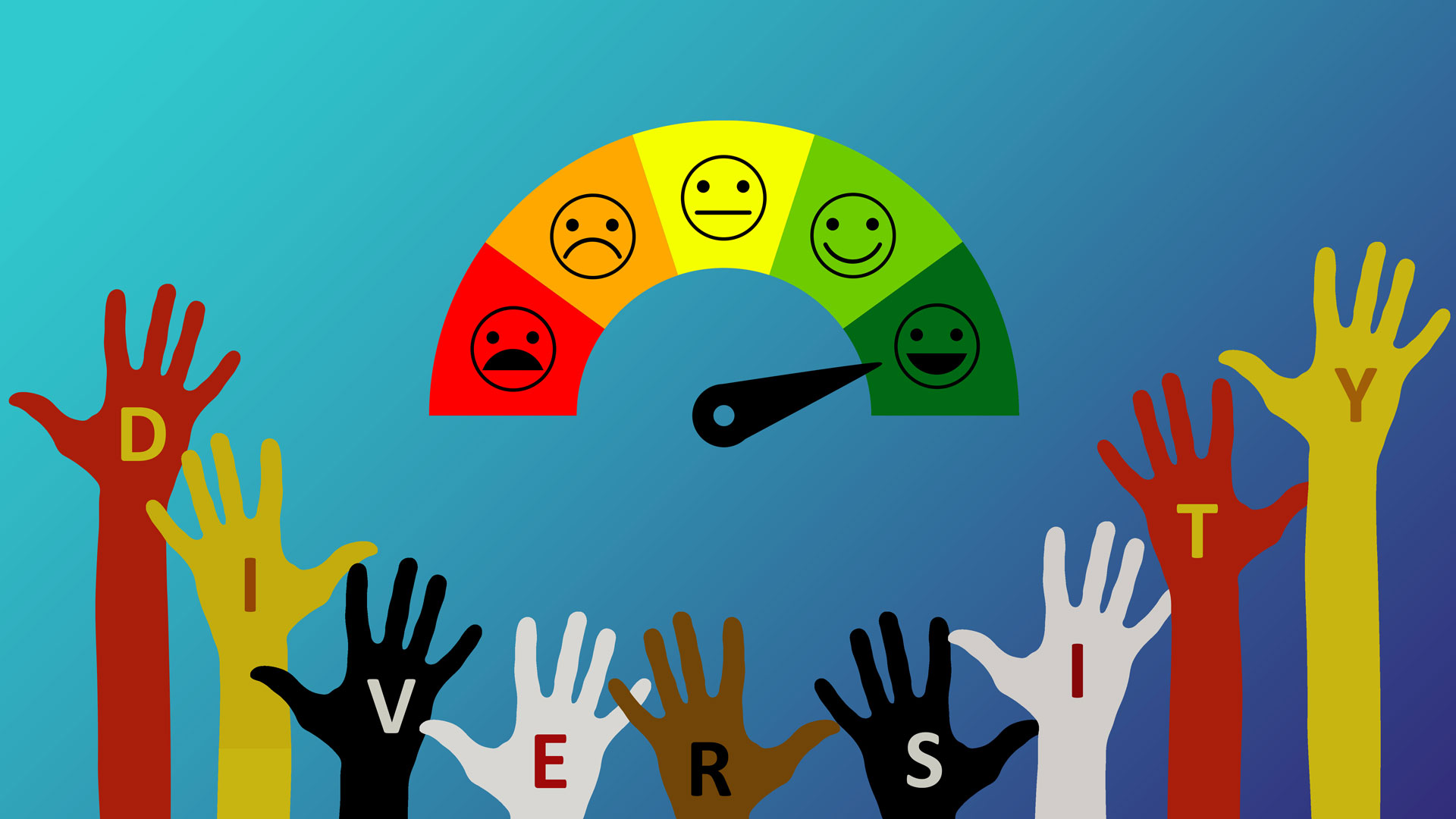Angela Peacock shows us why measurement adds up to effective diversity, equality and inclusion outcomes
Measurement alone will never drive diversity, equity and inclusion (DEI). But all good DEI work needs to start and finish with the numbers. Without firm footings in great data, your actions are doomed to fail. And, if you don’t measure the results at the end of a project, how do you know whether you have achieved your goal?
DEI work is ultimately about improving the numbers of marginalised groups – in whatever way works for the organisation. That means activating a variety of things to get there – from great chunks of policy change to process improvements and moving that huge chariot called ‘culture’. If you do all this and the numbers of marginalised groups joining, remaining with and climbing the ladder within the organisation stay pretty much the same, you have failed. Simple as that.
So it begins and ends with the numbers.
However, data and measurement in isolation will not work. Simply using global recruitment figures as a starting point for a DEI project, for example, and then setting out an intention – however well meaning – will not lead to success, no matter how much time and money is spent on training and implementation.
What gets measured gets done – but only if there is a plan to follow and only if people are held accountable for making it happen
The recipe for success is measurement first, plans next (not vague wish lists – actual plans) and accountability. Working together, they create the magic that leads to a successful outcome.
Excuses for not following this recipe are very common – but do not stand up to scrutiny. We don’t have the budget, for example – so why are you running inclusion training for your managers? We don’t have the time – but you have the time to NOT plan. Our executive team feels we are not ready for accountability, it will put people off, we have only just started our journey – the list goes on.
What gets measured gets done – but only if there is a plan to follow and only if people are held accountable for making it happen. So back to measurement. Basic numbers – and, in particular, the diversity numbers.
Diversity is something that, if it were possible to ask (not everything can be asked in every jurisdiction) and your people wanted to answer (organisations with great inclusion tend to have more people willing to share their diversity), could be measured. It is not the fluffy stuff, it is not opportunity or belonging – these should be part of equity and the creation of an inclusive culture. It is purely the diversity numbers you need to begin with.
Who do you have? Where are they in the organisation and how long did they take to get there? What got them there – which projects were they part of, who were their sponsors, what did their networks look like? This is probably more complex than you thought – it is far more detailed than most organisations manage.
But the most important group to do all this about is, in fact, not your marginalised groups but your top-tier executives, especially if the majority are from the dominant or privileged group in your field of work – essentially, the people who, for years, have excelled in and run the organisation. Only then do you choose one marginalised group to do the same to – and compare the two. If you want to know where to spend your training money, where to plan for a human resources (HR) project overhaul or a cultural change, it will be obvious from where the differences sit.
“It’s not what you know, it’s who you know” – so the saying goes. And, sure enough, most talent velocity results – with few exceptions – show the ‘power group’ moving ahead in line with a seam of unappointed sponsors who they grow and move with. If you discover this happening in your results – great… Just plan for this to happen to the marginalised groups in your company and then hold your leaders to account for making it happen.
The next step has two elements. The first is more fun and is called predictive measurement. It involves taking a view of where your organisation is right now and then making a few assumptions before applying the logic of “if we carry on doing what we have done” to the coming three years. Now look at the likely results – often they show that, if you keep on doing only what you have done, the outcome will be measurably bad in years to come. From here, start to wonder what that might look like on social media or to clients trying to ensure diversity in their supply chains. This is fun to share with executive groups and is often a key to unlock the door to their attention and future investment, too.
Then it is time for the plan. Not a wish list, not a loose strategy, not even asking your business managers to draw up plans of their own – they are not HR or DEI experts. The plan can either be across all aspects of diversity and geared to driving equitable behaviours that create inclusive environments. Or it can be a subset specifically aimed at the marginalised groups that you now have the talent velocity measured. Either way, the rules are the same:
- It should cover 18 months to three years.
- The first 12 months should be detailed by the month.
- It should include every process that needs to be improved to alter the numbers. So, if you discover that the one of the reasons the power group gets further on the talent pipeline is due to who they know, put systems in place to make sure everyone gets to be favoured like that. If your slates contain marginalised groups that are rarely recruited, plan to get tough with your recruiters and bonus on diverse candidates who are hired not just on the slate.
- Your training should be on there too – and linked to the improvements you are making, not randomly rolled out with no responsibility (before or after) for any of the attendees.
- Detail process changes – when, how, where to pilot, for example, how to create toolkits and guidance material, when to implement throughout the organisation and when to review.
- Hit every single mismatch you found in the measurement data. Not all at once – but over the time period of the plan.
- Ensure you RACI (responsible, accountable, consulted, and Informed) each action, each step.
Of course, there are other measurements that count. All the above activities need to work in tandem with some form of inclusion measurement. Some of the pulse surveys work well. But the simplest way forward is by using the employee engagement data you already have to measure inclusion. Often, it is just a question of cutting the data differently.
Isolate five or six inclusion indicator questions that already exist. Look for ‘feeling’ questions, such as: Do you feel that your opinion is valid? Do you feel heard in meetings? You can then build an accurate picture of the environment that a specific business unit, geography or even individual leader is creating. However, be aware that it is easy to have a high inclusion score working with a group of people who look and act the same. Introduce the demographic measurement to this approach and you can suddenly see just how the marginalised groups feel. But don’t forget that this is useless if there is no plan or accountability to change.
The importance of measurement should now be clear – any work in the DEI space is rendered pointless without it. It is a key enabler for adding a deep multilayer plan and ensuring accountability. And that really does all add up to DEI success.
Angela Peacock, director of global diversity and inclusion at GP Strategies




